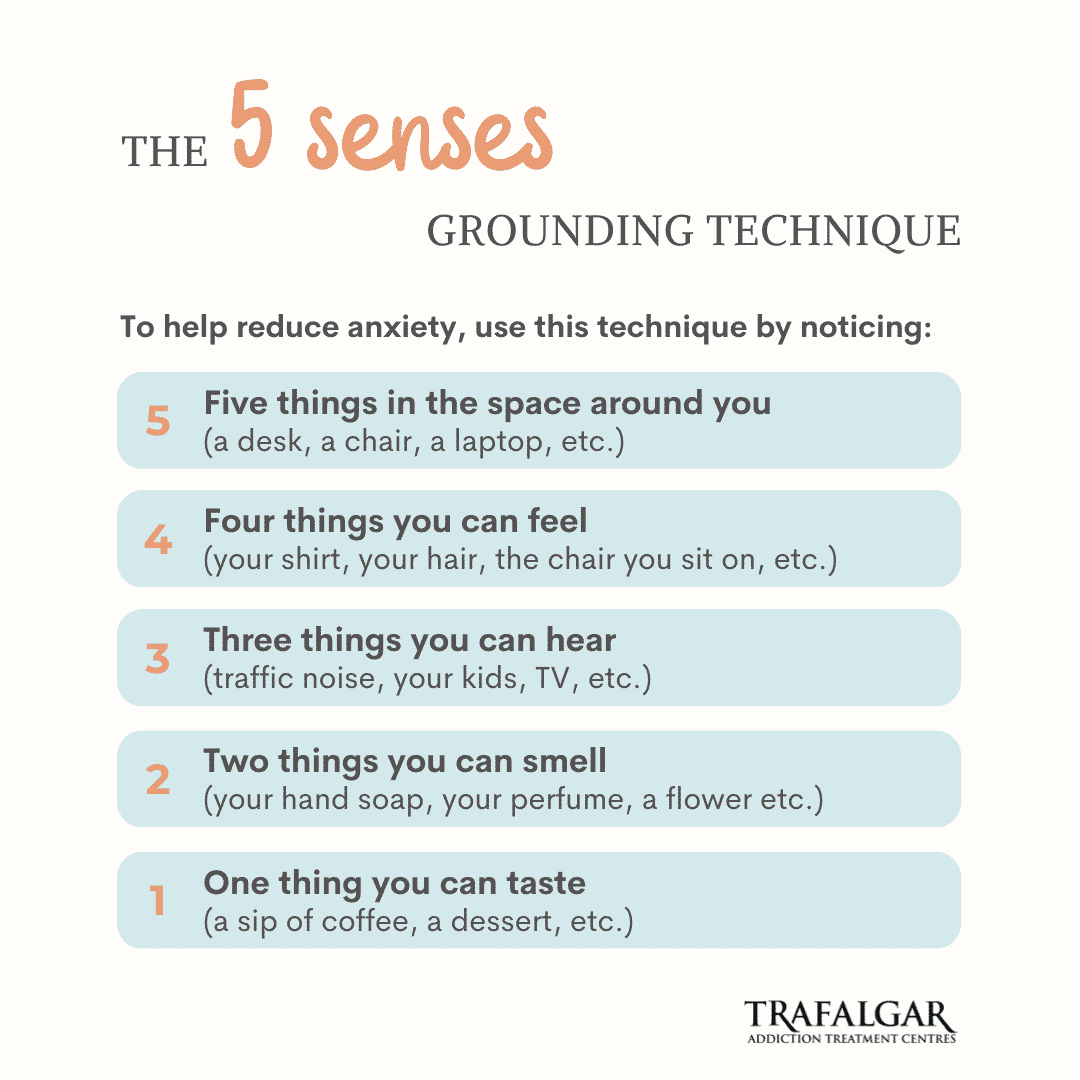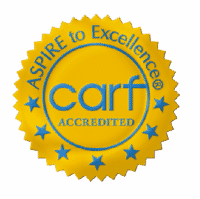
By Trafalgar’s Editorial Team
This Content is Created By Kinga Burjan, M.A., R.P.
General Coping Skills: The 5 Senses Grounding Technique
Hi, thank you for joining me on your wellness journey.
Today’s video is The Five Senses a Grounding Technique.
Our senses are a window into the world, we experience our life through our senses. However, it’s easy to stay stuck in our head or get caught up in our to-do list or what people expect of us.
Connecting to your senses throughout the day is a way to stay connected with yourself as well as to give reminders to enjoy the present moment.
The Five Senses Grounding Technique is actually a technique used to help us come back into the present moment when we’re experiencing anxiety.
So a lot of times when we experience anxiety, we become disconnected from ourselves because it becomes overwhelming our feelings or thoughts, and coming back to the present helps give us an anchor for that anxiety to dissipate. And the more that we can practice grounding ourselves in the present moment, the easier it will become to feel grounded and present over time.
So one way to look at the Five Senses Grounding Technique is the five, four, three, two, one technique, because we will look at five of our senses in the sense of five things we see, four things we touch, three things we hear, two things we smell and one thing that we taste.

Five things in the space around you
So, start off by noticing five things in the space around you. So in this room, for example, I see a laptop, I see a water bottle. I see a chair. I see the wall. I see a phone.
So by saying these things out loud and bringing my focus to what I see in the present moment.
Four things you can feel
Four things you can feel so this might be I feel my skin and I feel my shirt, I feel my hair, I feel the chair I’m sitting on, I feel the desk. That might have been five. You get the point.
Three things you can hear
Three things you can hear, so this might be a little bit harder, but you know what? I hear my own voice. I’m talking out loud. I hear some traffic outside and I hear someone rattling their keys in the distance. So again, naming it and bringing your focus to that sense.
Two things you can smell
Two things you can smell again. This one might be a little bit harder if there are no active smells in the room. So if that’s the case, you can think back to what you smelled earlier in the day. Perhaps there was a lovely scented hand soap or perhaps the smell of coffee, just naming those things and letting yourself feel or experience that sense, even if it’s in your imagination.
One thing you can taste
And then one thing you can taste, so again, this might be difficult if you can’t taste on your imagination or through your imagination, that’s OK. You can always replace the one thing you can taste with one thing that made you feel good.
So perhaps just being able to get out of bed this morning that made you feel good or seeing the sunshine or getting a random text message from a friend, something that made you feel good.
I hope today’s overview was simple, that was the point, but at the same time, it’s even these simple techniques won’t work unless you practice them.
So I encourage you to take this technique and practice it. And it doesn’t have to be during a time that you’re anxious. It could just be part of building that repertoire so that when you are anxious or feeling not so grounded, you’ve already practiced that.
So when you apply, it is going to be easier to apply and more effective.
Thank you again for joining me today. We’ll see you soon






